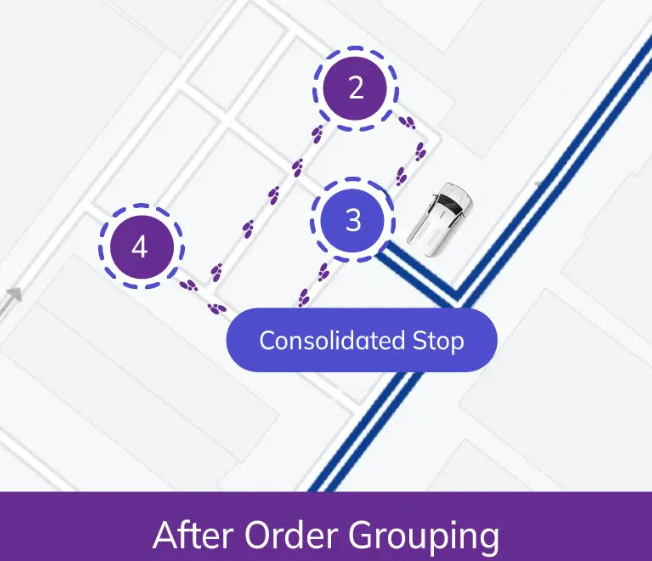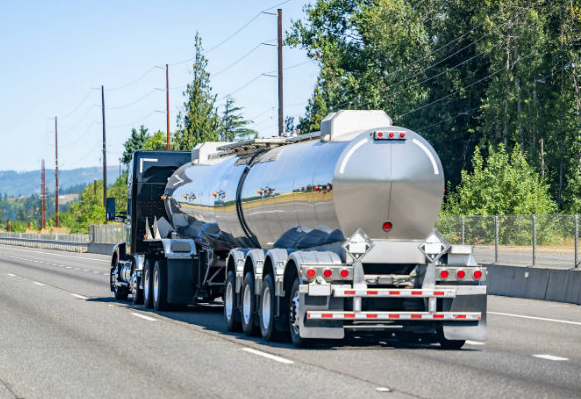Editor's Pick


Last mile delivery — that crucial stretch between a warehouse or store and a customer’s doorstep — is often the most expensive and time-consuming part of the delivery process. Companies are constantly looking for ways to optimize their last-mile operations in this competitive landscape. One of the transformative features aiding this industry is the concept of ‘order grouping’. This innovative feature of DynaRoute Route Optimization software significantly enhances operational efficiency and driver satisfaction. Order grouping, as offered by DynaRoute, simplifies the delivery process by clubbing multiple tasks located in close proximity into a single stop. This feature allows companies to set a specific diameter within which all tasks are grouped and treated as one, which is particularly useful in scenarios where multiple deliveries are lined up for locations like condos, office buildings or housing complexes. Doing so reduces the time and effort required for drivers to park and complete deliveries at multiple stops, thereby streamlining the entire route. Before we explore this feature and its advantages, let’s first examine the typical methods of assigning stops/tasks and discuss their limitations. Traditionally, orders are assigned individually to each delivery point, which can lead to inefficiencies, especially in congested areas. This method often results in complex navigation challenges, potential delays and difficulties in fleet management and tracking. Without features like order grouping, drivers may struggle to plan optimal parking and delivery routes independently, leading to increased time on the road and higher operational costs. Without order grouping, delivery routes can become a logistical nightmare: Understanding DynaRoute Route Optimization Program’s Order Grouping Feature for Last Mile Delivery Imagine you have a delivery van filled with packages destined for various addresses in a city. Traditionally, these deliveries might be assigned one by one, leading to a zig-zag route across town. Order grouping takes a smarter approach. By defining a specific radius (say, 500 meters), the system can automatically identify multiple orders within that area and combine them into a single stop. This way, the driver makes fewer stops, optimizes the route and saves valuable time. This post will explore how DynaRoute’s Route Optimization leverages the order grouping feature to streamline deliveries, especially in densely packed urban environments. Setting Up Order Grouping for Last Mile Delivery To illustrate, consider a practical scenario involving five delivery jobs, with three located near each other. Using DynaRoute’s software, these three jobs can be grouped to serve as a single stop. Here’s a brief breakdown of the setup process: The result? A significant reduction in total travel costs and an optimized delivery route that considers the proximity of delivery points. Practical Use Cases for Order Grouping for Last Mile Delivery Order grouping enhances last mile delivery across multiple industries by allowing drivers to consolidate multiple deliveries into fewer stops. This feature streamlines delivery routes for food, grocery, e-commerce, on-demand service, maintenance services, and medicines, significantly reducing time on the road and increasing efficiency. Here are some specific instances where this strategy proves especially effective: Last Mile Delivery in Apartment Complexes Imagine multiple residents ordering from different restaurants in a bustling urban apartment complex. Instead of each driver navigating parking and hallways separately, order grouping allows one driver to park once and deliver all orders on foot. This minimizes time spent on each delivery and reduces congestion within the complex. Last Mile Delivery in Office and Commercial Districts In busy commercial districts with dense office buildings, order grouping allows drivers to make one stop at a spot identified by the optimizer, from which they can deliver packages to various offices on foot. This reduces the time spent driving through congested areas, improving delivery efficiency. Last Mile Delivery in Large Residential Complexes In extensive residential communities, grouping orders means a driver parks in one location to deliver to multiple households. This approach reduces the number of vehicle movements within the community, enhancing safety and delivery efficiency. Last Mile Delivery in Neighborhood Clusters In suburban neighborhoods, a driver can park at a central location to deliver multiple orders to nearby homes. This is especially effective for clustered delivery times, such as grocery or food orders, reducing the number of stops and maximizing delivery speed. Last Mile Delivery in Tourist Areas Tourist-heavy areas with high volumes of accommodations and service needs can see improved delivery efficiency through order grouping. This method reduces traffic in areas often crowded with pedestrians and tourists and aligns deliveries with business downtimes, which can vary significantly from general commercial hours. Last Mile Delivery in Historical Urban Centers Historical urban centers often have narrow streets and limited parking, making traditional delivery methods problematic. Order grouping in these areas can minimize the logistical challenges and preserve the integrity of these culturally rich areas. Last Mile Delivery in Hospital and Healthcare Facilities Hospitals and large healthcare facilities often require the delivery of supplies to various departments. By setting a grouping diameter that includes multiple buildings or blocks, deliveries can be centralized to one receiving dock, thereby reducing the need for vehicles to access more congested or sensitive areas within the facility. These examples demonstrate how order grouping effectively consolidates tasks into fewer, strategically located stops and effectively addresses the logistical challenges faced by different types of last mile deliveries. This feature is particularly valuable in densely populated or logistically complex areas, optimizing both the driver experience and operational efficiency. Business Benefits of Order Grouping for Last Mile Delivery Implementing order grouping in last mile delivery unlocks significant business benefits, including improved efficiency, customer satisfaction and operational performance. Cost Reduction: Operational Efficiency: Elevated Customer Experience: Environmental Impact: Improved Tracking and Management: Competitive Advantage: Optimize Your Last Mile Delivery Operations With DynaRoute Route Optimization Order grouping is a useful and unique feature in the DynaRoute Route Optimization that adds efficiency to last-mile delivery operations. By consolidating multiple deliveries into single stops, it simplifies routes and enhances the delivery process. As the demand for quicker, more efficient deliveries escalates, features like order grouping offer tangible benefits to businesses seeking to optimize their delivery strategies. It’s a practical solution tailored to the real-world challenges of delivery services. It empowers companies to boost efficiency and reduce costs while improving the quality of their services.





